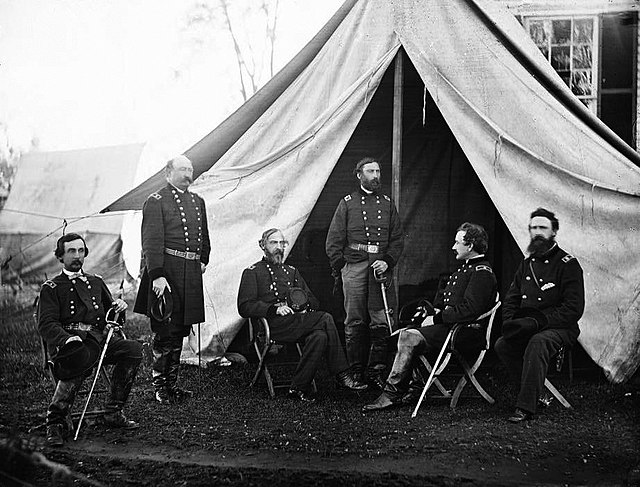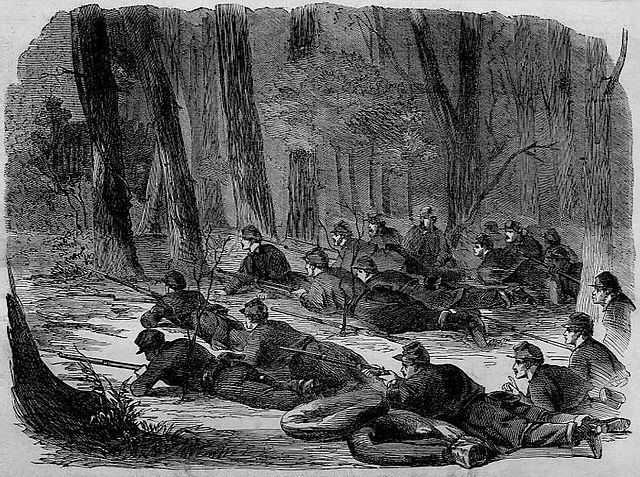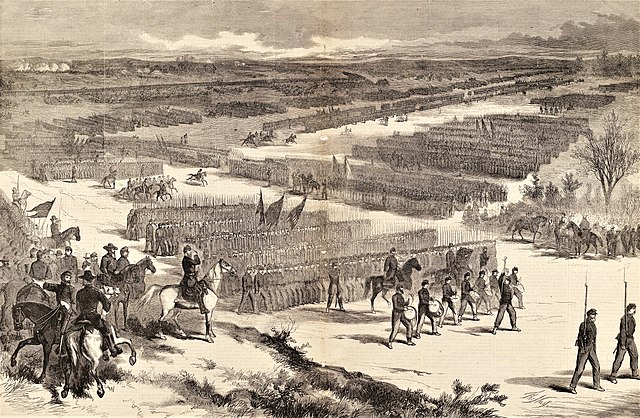Henry Jackson Hunt was Chief of Artillery in the Army of the Potomac during the American Civil War. Considered by his contemporaries the greatest artillery tactician and strategist of the war, he was a master of the science of gunnery and rewrote the manual on the organization and use of artillery in early modern armies. His courage and tactics affected the outcome of some of the most significant battles in the war, including Malvern Hill, Antietam, Fredericksburg, and most notably at Gettysburg, where his operational decisions regarding strategic cannon placement and conservation of ammunition for the Confederate main assault, contributed greatly to the defeat of Pickett's Charge.
Gen. H.J. Hunt
Portrait by Mathew Brady or Levin C. Handy
Commanders of the Army of the Potomac, Gouverneur K. Warren, William H. French, George G. Meade, Henry J. Hunt, Andrew A. Humphreys and George Sykes in September 1863.
The Army of the Potomac was the primary field army of the Union Army in the Eastern Theater of the American Civil War. It was created in July 1861 shortly after the First Battle of Bull Run and was disbanded in June 1865 following the surrender of the Confederate Army of Northern Virginia in April.
Generals of the Army of the Potomac at Culpeper, Virginia in September 1863, including (from left to right): Gouverneur K. Warren, William H. French, George G. Meade, Henry J. Hunt, Andrew A. Humphreys, and George Sykes
The Army of the Potomac – Our Outlying Picket in the Woods, an illustration of the Army of the Potomac by Winslow Homer published in Harper's Weekly on June 7, 1862
Grand Review of the Army of the Potomac, an October 1863 illustration by Thomas Nast in Harper's Weekly
An illustration of the Army of the Potomac celebrating Saint Patrick's Day with a steeplechase race among the Irish Brigade, drawn by Edwin Forbes on March 17, 1863






